Japanese gardens are renowned the world over for their beauty, intricacy, and depth of meaning. The construction of gardens became an important cultural art form in and of itself and is a great source of national pride of Japanese people and a great source of enjoyment for all who visit Japan.
Like any art form, the style and design were heavily influenced by the prevailing philosophies and politics of the era. Over the last 1000+ years, Japanese gardens have evolved into a variety of styles and served a variety of purposes from the strolling gardens for the recreation of feudal lords during the Edo period to the dry stone gardens used for religious meditative purposes by Zen monks.
Early Japan (Before 794 AD)
One of the earliest garden forms in Japan were sacred places in the midst of nature, which humans marked by pebbles. Before Chinese culture was introduced to Japan, this early garden form can be recognized at some ancient Shinto shrines, for example at the Ise Shrines, whose buildings are surrounded by wide pebbled areas.
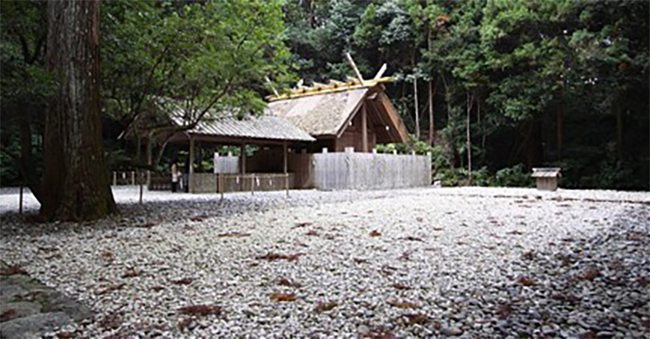
The adoption of Chinese culture and Buddhism from the 6th century onwards heavily influenced the design of Japanese gardens. Gardens were built at imperial palaces for recreational purposes, namely the entertainment of the emperor and aristocrats. Focal points were often ponds and streams which attempted to reproduce miniature representations of famous landscapes. They contained many Buddhist and Taoist elements and reflected these philosophies in their design.
Unfortunately, none of these early palace gardens dating back more than 1500 years survive. However. the East Palace Garden at Heijo Place (below) was meticulously reconstructed based on archaeological findings in Nara and opened to the public in the 1990s.
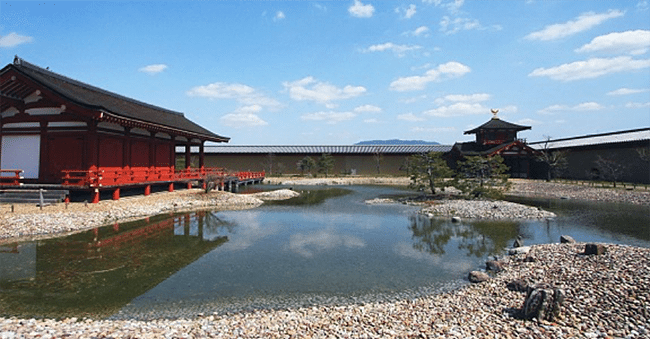
Heian Period (794-1185)
During the relatively peaceful Heian Period, the capital was moved from Nara to Kyoto where the aristocrats devoted much of their time to the arts. They began building Shinden Gardens at their palaces and villas, large gardens which were used for elaborate parties and for recreational activities such as boating, fishing, and general enjoyment.
Shinden Gardens were described in detail in the classic novel Tale of Genji. Designed after Chinese concepts, the gardens featured large ponds and islands connected by arched bridges under which boats could pass. A gravel covered plaza in front of the building was used for entertainment, while one or more pavilions extended out over the water.
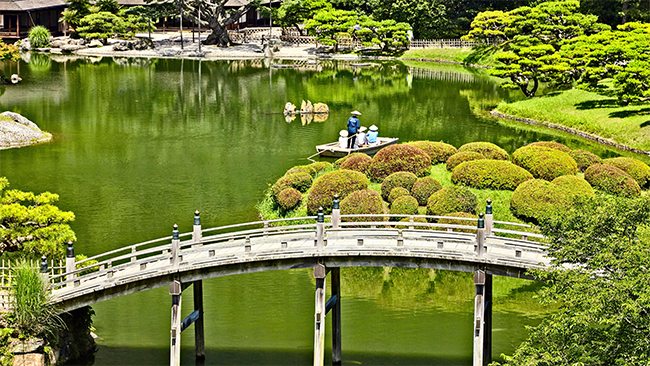
Not a Shiden Garden, but Ritsurin Garden (above), dating back to 1625, carries on many influences from the Heian Period.
Kamakura and Muromachi Periods (1192-1573)
At the beginning of the Kamakura Period, political power in Japan shifted from the aristocratic court to the military elite. The military rulers embraced the newly introduced Zen Buddhism and the prevailing philosphies of the ruling class shifted from consumption and recreation to a disciplined mindset. Zen Buddhist concepts would exert a strong influence on garden design.
Gardens were no longer built as an extension of aristocratic courts but were built attached to temple buildings to help monks in meditation and religious advancement rather than for recreational purposes. Gardens also became smaller, simpler and more minimalist, while retaining many of the same elements as before, such as ponds, islands, bridges, and waterfalls.
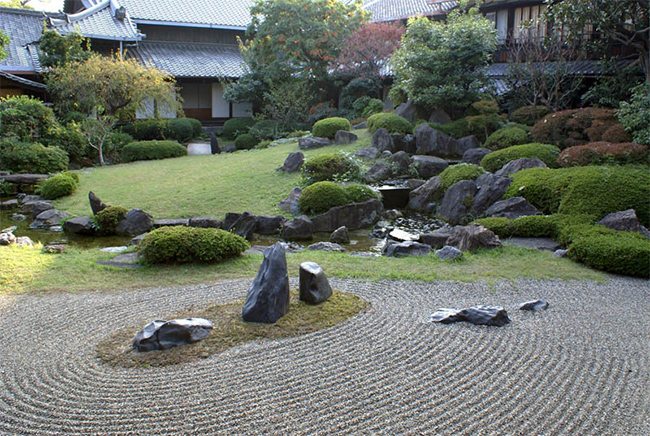
The most extreme development towards minimalism was the Karesansui Dry Garden which uses nothing but rocks, gravel, and sand to represent all the elements of the garden landscape. They still attempted to represent famous landscapes but water is symbolized both by the arrangements of rock forms to create a dry waterfall (karetaki 枯滝) and by patterns raked into sand to create a dry stream (karenagare 枯流).
With their lack of flowering plants, the gardens monochrome nature was intentionally similar to ink monochrome landscape paintings, in particular those from the Chinese Northern Song dynasty (960-1126). Like the 2D paintings, the gardens are meant to be viewed from a single, seated perspective, quite the departure from the strolling gardens of leisure that came before them.
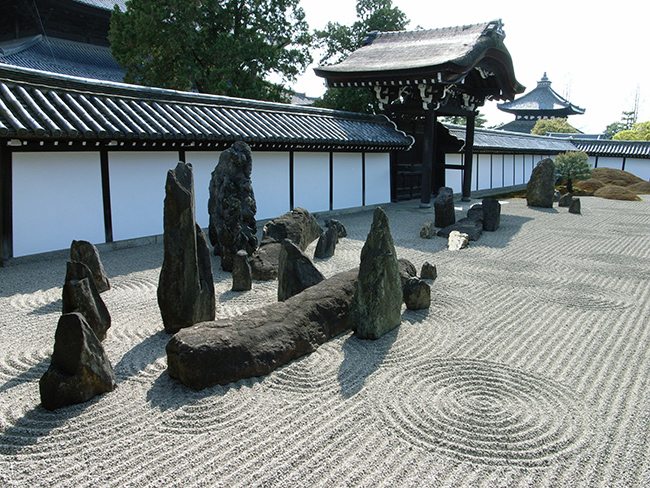
Lafcadio Hearn was a Greek born, but Irish raised writer who, after a year in New York, moved to Japan for the rest of his days and became a Japanese citizen and took the name of Koizumi Yakumo. He famously achieved a high level of fluency in Japanese and wrote many books describing Japanese culture as understood from the perspective of an outsider. As such he helped many Japanese to better understand the essence of what it is to be Japanese and as such, he is perhaps the most celebrated and historically significant of all foreign writers in Japan. On the topic of Japanese rock gardens, he wrote:
“In order to comprehend the beauty of a Japanese garden, it is necessary to understand — or at least to learn to understand — the beauty of stones. Not of stones quarried by the hand of man, but of stones shaped by nature only. Until you can feel, and keenly feel, that stones have character, that stones have tones and values, the whole artistic meaning of a Japanese garden cannot be revealed to you. Not only is every stone chosen with a view to its particular expressiveness of form, but every stone in the garden or about the premises has its separate and individual name, indicating its purpose or its decorative duty.” Lafcadio Hearn (1850-1904)
Many of the original gardens from this period still survive in Japan, especially in Kyoto‘s leading Zen temples, such as Ryoanji, Daitokuji, Tenryuji and Kokedera. Some older examples are also found in Kamakura, including the early Zen gardens of Zuisenji and Kenchoji.
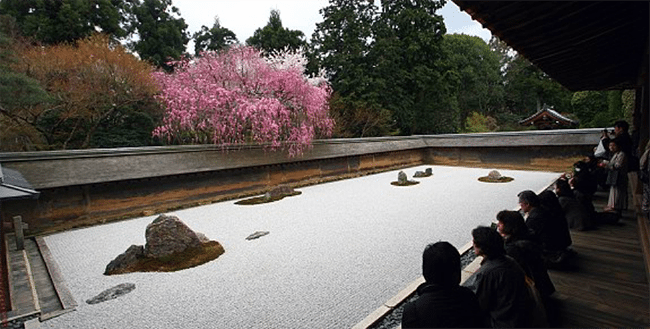
Karesansui Dry Garden (Ryoanji Temple in Kyoto)
Azuchi-Momoyama Period (1573-1603)
Tea gardens (Chaniwa) had already appeared in previous periods but reached the height of their development during the Azuchi-Momoyama Period when the contemporary tea masters refined and perfected their design. They were imbued them with the spirit of “wabi” or rustic simplicity, for which they are recognized today.
Tea gardens are simple and utilitarian often with a stepping stone path leading from the entrance to a tea house. For lighting and decorative elements, stone lanterns were used, while a wash basin (tsukubai) is used for ritual cleansing. Many tea gardens can be found in Japan today, although many of them are incorporated into larger garden designs.
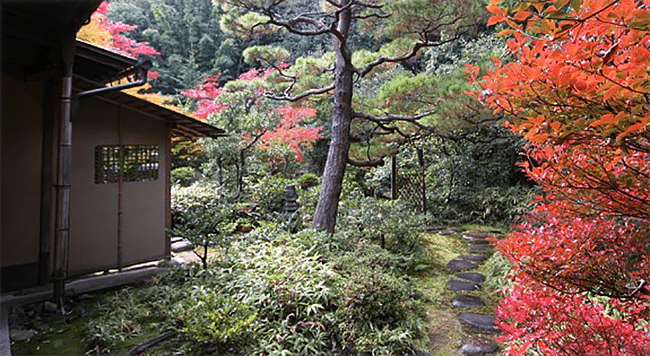
Edo Period (1603-1867)
During the Edo Period, garden design departed from the minimalism of the Muromachi Period as the ruling class rediscovered its likings for extravagant design, consumption, and recreation. The product of this changed culture was the creation of many large strolling gardens with ponds, islands and artificial hills that could be enjoyed from a variety of viewpoints along a circular trail. Many strolling gardens also included elements of more simple tea gardens and even the use of large rocks carried on from the Muromachi period.
The regional feudal lords constructed strolling gardens both in their hometowns and at their secondary villas in Edo (current day Tokyo). Therefore, strolling gardens today can typically be found in former castle towns and scattered around Tokyo. Among the most celebrated strolling gardens are Kanazawa’s Kenrokuen, Okayama’s Korakuen, Takamatsu’s Ritsurin Koen, Kyoto’s Katsura Imperial Villa and Tokyo’s Rikugien and Koishikawa Korakuen.
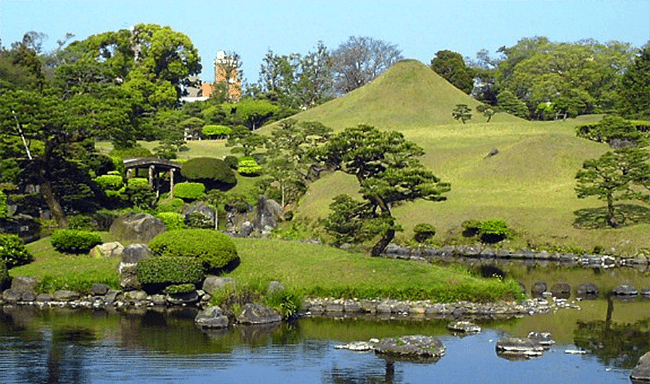
In contrast, Tsuboniwa are small gardens that became popular among the urban population. A tsubo is a unit of measurement of internal floor space, still used in real estate and property rentals in Japan today. A tsubo refers to the aire of two standard tatami mats. Tsuboniwa were 2 tsubo (four tatami mats) in size and this mini gardens often filled in the courtyard spaces within buildings or between townhouses.
Much like the pebble and rock-based Zen gardens, they were not were supposed to be viewed externally and not entered, but this was largely due to their limited size rather than purposes of mediation. They featured decorative elements, often including a small water feature and provided light, fresh air and a touch of nature through the middle of traditional houses that often were in densely populated areas.
Tsuboniwa can be seen in some of the historic merchant residences that are open to the public. They also remain a popular type of garden today among people who wish to incorporate a small green space into their homes but lack the luxury of abundant space.
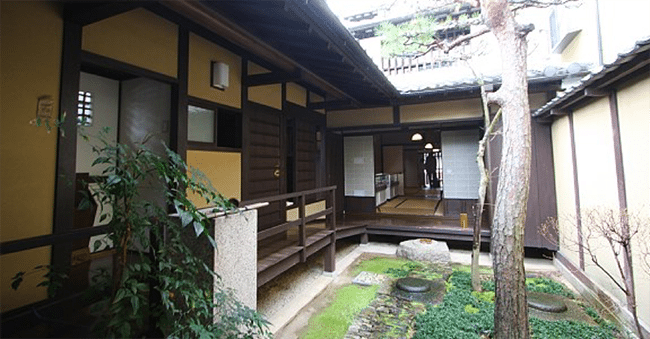
Modern Gardens (1868 to present)
In the Meiji Period, Japan entered an age of rapid modernization and Westernization and many western-style city parks were built. Many of the formerly private strolling gardens were opened to the public. The construction of new gardens, previously driven by aristocratic, military elite, Buddhist monks and feudal samurai lords was now driven by politicians and indistrialists.
New private strolling gardens which often contained western gardening elements such as flower beds and expansive open lawns. Many of these gardens were built in the new capital of Tokyo, for example, the Kiyosumi Teien.
Some modern garden designers also tried their hand at creating more traditional types of Japanese gardens, although they often included some new ideas into them. Good examples are the Zen gardens of the Tofukuji Temple in Kyoto and the stone garden in the back of Kongobuji Temple on Koyasanwhich date from the 1930s or the even more recent gardens of the Adachi Art Museum near Matsue.
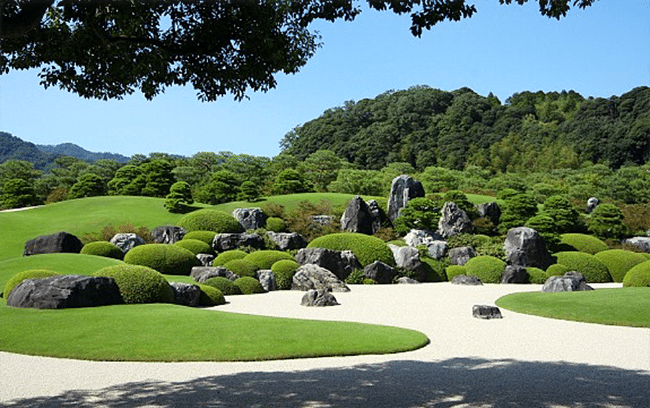
Adachi Art Museum near Matsue
Any trip to Japan will no doubt include a visit to some Japanese garden, but for those particularly interested in experiencing the best Japan has to offer on a small group tour, with an English speaking knowledgeable guide accompanying throughout, you might want to consider our “Gardens of Japan” tour. The tour takes in several of the best examples of Japanese gardens but also so much more besides.
Contact us to learn more about this tour and take your first steps towards your own experience of Japan’s finest gardens that can transport you back through history showcasing the best of all four seasons.

